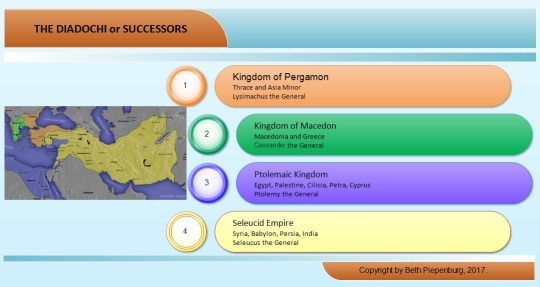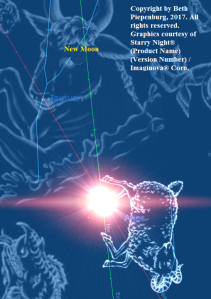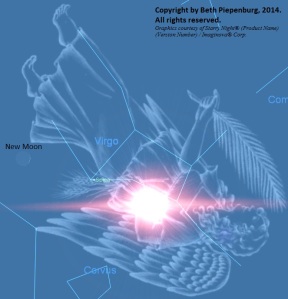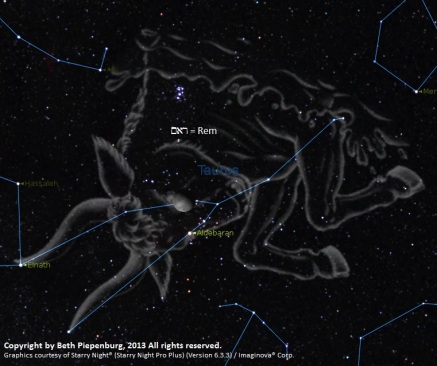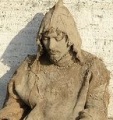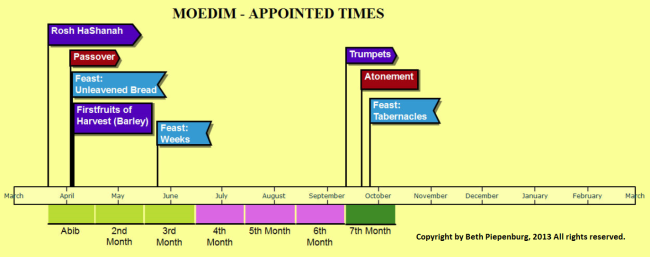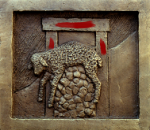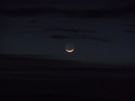RESURRECTION OF LAZARUS: A Story of Love
By Beth Piepenburg
INTRODUCTION
In late December, Jesus had walked in the Temple in Solomon’s Porch during Hanukkah (Feast of Dedication). When the questioning crowd asked who He was, He replied that “I and my Father are one.” Angry, the Jews took up stones and sought to take Jesus by force, but he escaped across the Jordan in the area of Perea and dwelt there for two months. Soon Purim would be celebrated during the month of Adar, that is, from the evening of March 3rd to the evening of March 6th in the year 33 A.D[1].
John 11 has two parts: The raising of Lazarus, and the outcome of this event. Both parts are each arranged in a chiastic fashion. While the central theme for the first part is Jesus being the Resurrection and the Life, the central theme for the second part is Jesus residing at the location where Abraham encamped (Khirbet el-Maqatir)[2] between Bethel and Hai (possibly et-Tell).
1ST PART:
KABOD (1-4)
From historical tradition, Lazarus is thirty years old when he became sick. His name means God is my helper, and he certainly would need God’s help. Along with his sisters, Mary and Martha, they live in the town of Date House, known as Bethany. By the way, the date palm is an Israeli symbol of praise. His sister Mary would become known for anointing Jesus in a few weeks to come. Desperate, his sisters send a message to Jesus about Lazarus being sick. By substituting the words, he whom you love, for their brother’s name, they are reminding Jesus of the strong relational friendship of love he has with Lazarus. Can you imagine the surprise when they hear from the messenger that Jesus had replieds, “This sickness is not unto death, but for the glory of God, that the son of God might be glorified thereby.” Lazarus is now dead! However, this fourth verse is a Kabod = glory verse for two reasons. Not only is the word glory used twice for emphasis, but it is represented by twenty-six Greek words, which the numerical value of twenty-six in the Hebrew refers to both YHWH and glory.
LOVE (5-16)
Jesus has a strong brotherly love for this family. Although Mary is an important character in a previous narrative and a later narrative, Martha is the key person here who has interaction with Jesus. Then Jesus delays for two days before leaving the Jordan. Sometimes, our timing is not God’s timing. Fearing the enemies of the Lord, the disciples are concerned about Jesus being stoned if He should return to Jerusalem. Sensing their fear not only for Him but for themselves, His allegorical answer conveys not only that spring was approaching by the equal number of hours in a day, but that tension existed between day and night. While the twelve hours represent the disciples, the day represents Christ and the night represents Satan. Therefore, one cannot stumble in the daylight because he walks in the Light of Christ, unless he chooses to walk in the night because he walks not in the light. As his disciples are thinking upon his figurative answer, He explains in the following Kabod = glory verse of seventeen Greek words that He intends to awaken the sleeping Lazarus. Missing his point about sleep, they respond that Lazarus will be saved or will be well. Because they misunderstood what He had meant, He plainly tells them that Lazarus is dead. Evidently, Jesus sees this loss of a friend as an opportunity for spiritual growth of his disciples in the area of belief. They will need this object lesson for strength in next month’s event. Is Thomas expressing his cowardice by sarcasm, or is he expressing his braveness and love for the Lord?
WHERE IS YOUR PRESENCE? (17-22)
By the time Jesus had arrived, Lazarus had been in the tomb four days, which also means that Lazarus had died four days ago. In fact, the messenger had left on the day that Lazarus had died. While Bethany is about two miles from Jerusalem, the distance is short climb for friends from Jerusalem to pay their condolences. Martha approaches Jesus, leaving Mary at the house. Addressing Jesus as Lord, she shares that if He had arrived in time, Lazarus would not have died. Yet, she maintains that Jesus has a direct connection with the Father. She is really posing an oxymoron by saying, if your presence had been here, then everything would be fine; however, I do believe that God answers your requests. In reality, her faith is limited to His presence.
I AM THE RESURRECTION (23-27)
When Jesus tells Martha that her brother will rise again, Martha acknowledges that her brother will rise at the Resurrection. Emphasized in the Greek are the two words I AM, which is equivalent to saying [3]אהיה in the Hebrew. “I AM the Resurrection and the Life” is the theme of the story of Lazarus. Yet, Jesus states that those believers who die will live, and they will not die in eternity. When He asks if she believes these truths, she professes that He is the Messiah, the Son of God.
WHERE IS YOUR PRESENCE? (28-32)
This section is similar to the earlier one (17-22), moving from the arrival of Jesus, to the crowd, and then to the first sister of Lazarus. Not only has Jesus arrived, but he is calling now for Mary. Their comforters, who follow Mary toward the grave, will become witnesses of this event. Although Mary expresses the same words as her sister, she does so from a spirit of worship.
LOVE (29-37)
Jesus identifies with their suffering by his own groaning and weeping. Thus, the Jews recognize the strong relational friendship of love Jesus has for Lazarus, but fail to recognize the greater bond of brotherly love He has for Lazarus. Knowing that Jesus had opened the eyes of the blind man at Hanukkah (Jn. 9), could He not have the foresight to know the condition of Lazarus? Could He not have prevented Lazarus’ death?
KABOD (38-44)
Groaning again, Jesus comes to the closed cave, and asks for the stone to be taken away. Aghast, Martha reminds Him that the body is in decay due to being dead for four days. You see, the Jews had a belief that the soul could not return to the body once it was in decay[4]. Obviously, Lazarus was good and dead! For Martha to see the glory of God, a key phrase here, Jesus reminds her “if you would believe”. Because of the people standing by Jesus gives thanks to the Father who hears Him. Then Jesus calls Lazarus to come forth! Lazarus, bound hand and foot with grave clothes and his face bound by a towel (soudarion). Jesus says for them to loose Lazarus and let him go.
2ND PART:
JEWISH LEADERS (45-53)
While many believed, some did not and reported to the Pharisees about what Jesus has done. His miracles bothered many of the members of the Sanhedrin. Two things bothered them: People would believe on Him, and their corrupt power was at risk with the Roman government. Joseph Caiaphas, the high priest from 18-36 A.D., suggested that it was best for one man to die for the people so the nation be spared. From that point on, most of the Sanhedrin sought for the death of Christ.
JESUS (54)
Jesus went northerly to Ephraim (Ai – Khirbet el-Maqitir)[5] with his disciples, an area located next to the wilderness. This is an important statement, because Jesus was staying at the spiritual location where Abraham had built an altar to the Lord.
JEWISH LEADERS (55-57)
Soon Passover would be observed with many coming to Jerusalem to purify themselves, and hoping to see Jesus. Would He dare to appear in person? However, the Jewish leaders had commanded that if anyone knew of Jesus’ whereabouts, they were to report it to them.
CONCLUSION:
Not only does this miraculous event link the previous healing of the blind man at Hanukkah, but it will link the chain of events to come during Passion Week.
[1] According to my astronomical calculations.
[2] At the time of Joshua conquest, Ai had already moved to the location of Khirbet el-Maqatir.
[3] Ex. 3:14 And God saith unto Moses, `I AM THAT WHICH I AM;’
[4] “Bar Kappara taught: Until three days the soul keeps on returning to the grave, thinking that it will go back; but when it sees that the facial features have become disfigured, it departs and abandons it” (Genesis Rabbah 100:7; cf. Leviticus Rabbah 18:1; Ecclesiastes Rabbah 12:6).
[5] http://www.biblearchaeology.org/file.axd?file=2014%2f12%2f2014_Fall_BAS_Stripling_article_final.pdf
Copyright by Beth Piepenburg, 2018. All rights reserved.



